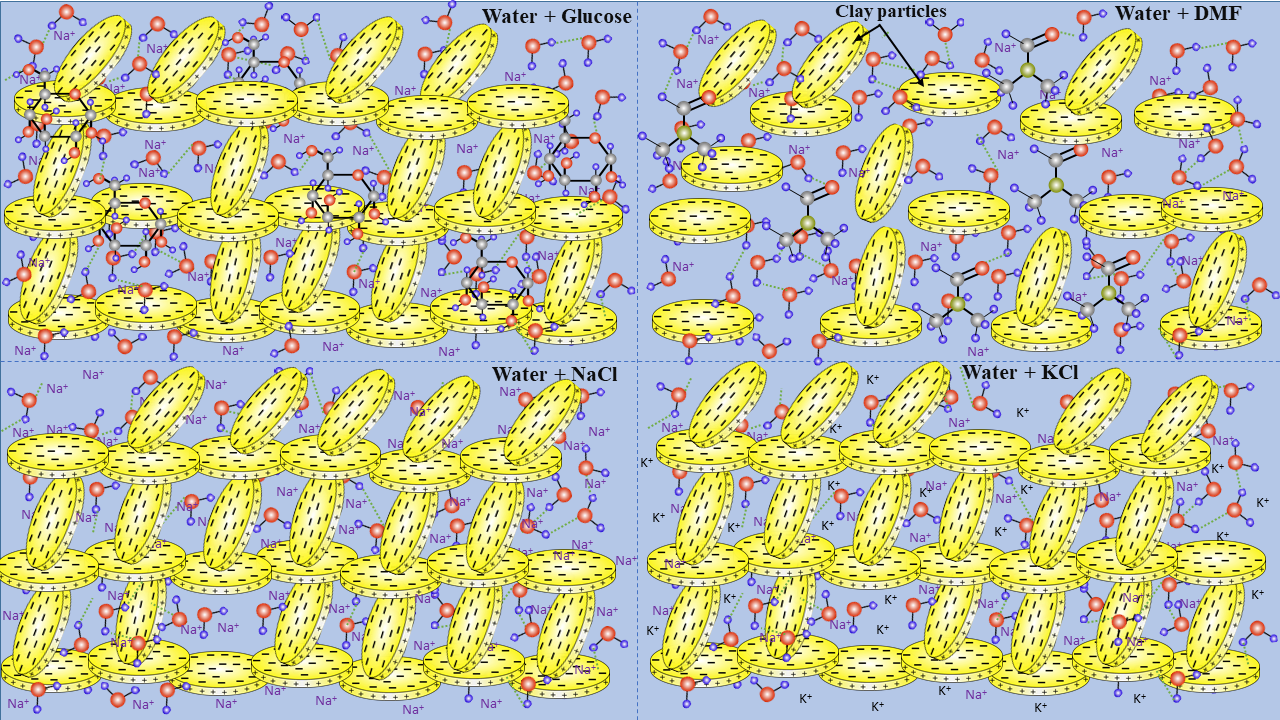Scientists have found that the properties of clay dispersion can be controlled by altering the structure of water by adding additive molecules to it. This can help control the time needed to transform liquid to soft solid state, thus enhancing the stability and shelf-life of clay suspensions as well as artificial clay suspensions or Laponite which is widely used in cosmetics and personal care products, pharmaceuticals, agrochemicals, paper fillers, coating pigments, thickener in cosmetics and nano-composites.
Water is a key component in any soft material that involves clay as well as artificial clay particles. Thus understanding the influence of water structure on the clay colloid dispersion properties, therefore, is extremely important.
To this end, researchers from Raman Research Institute, an autonomous institute of the Department of Science & Technology, Government of India, used dispersions of charged Laponite clay colloids as a model system to understand the properties of clay-water mixtures. The work supported by RRI, DST, and SERB has been accepted in the journal Soft Matter published by the Royal Society of Chemistry.
The researchers Chandeshwar Misra, Venketesh T Ranganathan, and Ranjini Bandyopadhyay found that water structure in a clay water mixture (or an aqueous colloidal clay dispersion) influences its mechanical aging (a spontaneous buildup of sample elasticity due to formation of microscopic colloidal structures) and structural properties.
The team explained that clay colloids acquire electrical charges when mixed or dispersed in water and the resultant aqueous dispersions show an interesting behaviour called aging. Since the sodium ions that reside on the clay particle surfaces leach out into the water, the clay particles in the dispersion become increasingly negatively charged with time. Strong osmotic pressure gradients result, and the clay dispersions automatically transform or age from a liquid state to a soft solid state owing to the electrostatic interactions between clay particles.
While research on charged clay colloids has been performed for decades, this is the first time that a systematic investigation of the role of water structure on the physicochemical properties of dispersions of charged clay colloids is reported. RRI team achieved control over hydrogen bond populations in the water medium by adding two types of molecules --- kosmotropes, or structure enhancers, and chaotropes, which are structure breakers. They found a clear correlation between water structure and dispersion properties. They discovered that in the presence of strong interparticle interactions, water structure has a minimal role in determining dispersion properties.
In contrast, when electrostatic interactions between the clay particles are weak, structured water enhances the aging and mechanical strength of the clay-water mixtures. On de-structuring, the water medium, a delay in the aging of aqueous clay dispersions was observed by them.
This research could provide a new tool to achieve control over the properties of clay suspensions and can also help in understanding and predicting bulk flows of soil and mud, particularly in river delta formation, landslides, and so on.


Meniscus indicates flow Meniscus indicates rigid sample
Publication link: (https://doi.org/10.1039/D1SM00987G)
Authors: ChandeshwarMisra, Venketesh T Ranganathan, and Ranjini Bandyopadhyay Soft Condensed Matter Group, Raman Research Institute, Bangalore 560080, India.






























